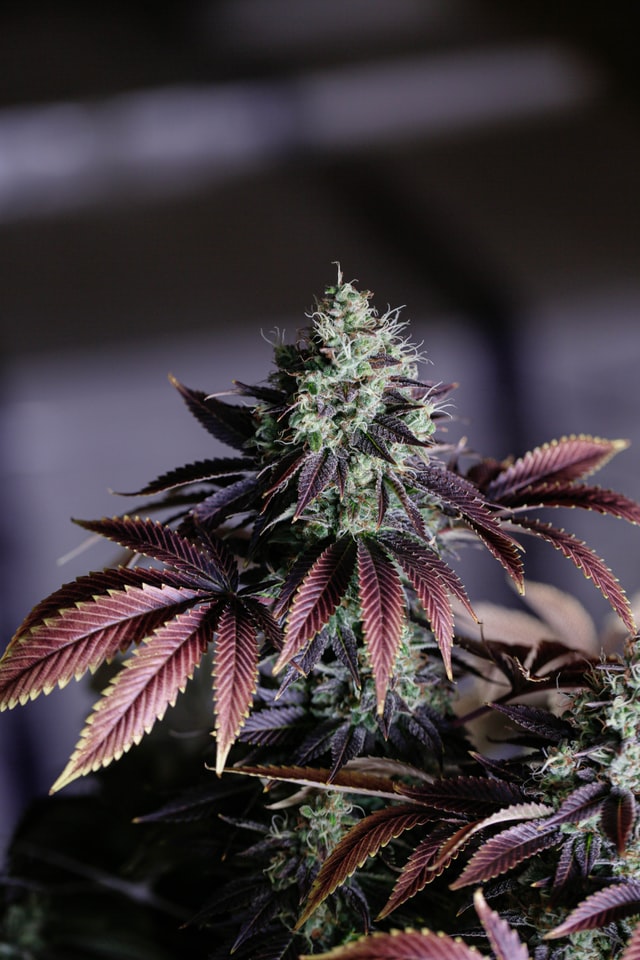Purple Haze: The rock star among strains!

In relation to Cannabis, "Purple Haze" is often used to refer to a specific strain of marijuana that has a purple color. The strain was originally developed by a breeder named "DJ Short" and is known for its high THC content and its sweet, fruity flavor. Some people also believe that the strain "Purple Haze" is a nod to the song by Jimi Hendrix, and that it is sometimes sold under the name "Hendrix Haze." However, it is important to note that the use of cannabis is illegal in many parts of the world and that there may be health risks associated with its consumption.
Table of Contents
- What is Purple Haze?
- The Sativa Hybrid
- Uses and Effects
- Terpenes and Flower Characteristics
- What Are Purple Strains Known For?
- Are There Any Benefits?
- Historical Background and Cultural Significance of Purple Haze
- Conclusion
What is Purple Haze? A "Quick Overview."
The Rockstar of Strains!
This classic is an sativa-dominant hybrid that has thrilled generations of cannabis enthusiasts.
Purple Haze is an 85/15 sativa-dominant strain. The origin is unknown, but experts believe it is a cross between the popular Strains Haze and Purple Thai. The same genetics that produced popular strains like Lemon Haze and Grape Ape. As a sativa-dominant hybrid with Haze lineage, it is an excellent strain for treating muscle tension, pain, headaches, depression, and anxiety. This strain keeps you active and not sleepy. Take this strain to a party, a hike, or a social gathering.
Recreational and medical users have described an intense feeling of inspiration, blissful relaxation, and a light body sensation. This aromatic strain is known for its cerebral stimulation, which alleviates fatigue and discomfort. This stimulation can benefit users with attention deficits who find it hard to focus on a single task. Medical patients also use it for nausea, migraines, and chronic pain.
The THC content of Purple Haze can range from 16 to 21%, which is typical for a sativa, while the CBD content usually ranges from 0.1 to 0.5%, making it an extremely useful strain. The CBN content typically ranges from 0.01-0.05%.
Uses and Effects
Purple Haze is highly recommended for beginners as it is very easy to grow. With a flowering time of 8 to 10 weeks, this plant yields extremely high returns both indoors and outdoors. Indoor yields can reach up to 600 grams/m², and outdoor yields can reach up to 1500 grams/plant. It is also highly resistant to diseases. Growers recommend a sunny climate for Purple Haze.
Terpenes and Flower Characteristics
The typical terpene content of Purple Haze is about 0.67% Beta-Caryophyllene, 0.5% Humulene, 0.17% Myrcene, and a handful of other 0.1% terpenes (Linalool, Alpha- and Beta-Pinene, etc.). This combination of oils has a calming, pain-relieving, and anti-inflammatory effect, especially in Purple Haze wax.
The flowers of Purple Haze are strikingly deep green with rich purple hues. They tend to have long, large buds surrounded by huge leaves. The flowers are covered with a thick layer of sweet, sticky resin. Some variants even have purple hairs with slight blue undertones.
What Are Purple Strains Known For?
Purple strains are known for producing high amounts of the terpene Myrcene and the cannabinoid THC. These strains usually descend from Purple Afghani, which is sometimes crossed with Skunk. Purple strains are known for producing the pigment anthocyanin (purple color) to protect themselves from sunlight. This color belongs to a class of plant pigments called flavonoids. The flavonoid anthocyanin is responsible for the red, blue, and purple pigments in Purple Haze. The hue depends on the pH level; a more acidic plant shows red pigments, a more alkaline plant has blue tones, and a neutral plant produces purple flavonoids in between.

Image by Diyahna Lewis, unsplash.com
Are There Any Benefits?
Purple Haze marijuana is primarily a cosmetic novelty, but those who enjoy it will likely be glad to know that it might have potential benefits. Anthocyanins are known as powerful antioxidants and are thought to have pain-relieving, neuroprotective, and anti-inflammatory effects.
Anthocyanins are found in antioxidant-rich foods such as grapes, blueberries, and raspberries. Antioxidants are also known for their anti-inflammatory effects in the body. Although there are no scientific studies, it is possible that purple strains may act in the same way.
- ANTHOCYANINS ARE THE PURPLE IN PURPLE HAZE
Anthocyanins are a group of 400 water-soluble pigments found in cannabis. Some strains contain them in larger amounts than others, which is why some strains have the ability to turn purple while others do not. However, it's not just the purple color; anthocyanins can also appear red or blue depending on pH levels, but this is rarely seen since the pH levels causing these changes are harmful to the plant.
The color change from green to purple/violet occurs in the last weeks of flowering when the flowers produce large amounts of anthocyanins. As the flowering period is marked by fewer sunlight hours, less chlorophyll is produced. This allows the anthocyanins, which are otherwise blocked, to "shine." This change can also be observed in plants with low amounts of anthocyanins that sometimes exhibit gold-orange tones.
- ENHANCING PURPLE COLORATION
Some strains naturally turn violet because they have been selectively bred for this trait. However, this inherent potential can be enhanced through certain breeding techniques. First, you need a strain that naturally produces high amounts of anthocyanins. Examples include Northern Lights, Purple Haze, Blue Cheese, and Blueberry Kush.
The secret to enhancing the color of these beauties is to lower the temperature in the growing area during the last two weeks of flowering. It should remain consistently below 10 degrees Celsius, but always above 4 degrees. It is unclear why this brings out the anthocyanins, but it works.
It should be noted that this is relatively safe, but a sudden temperature drop can shock your cannabis. So be careful and proceed gradually.
Some guides suggest that flowers turn purple if you deprive the cannabis plant of oxygen, carbon dioxide, and certain nutrients. This should never be attempted and is a completely wrong way to achieve color change. It is extremely unsafe for the plants and poses a high risk of compromising the quality of the final product.
Historical Background and Cultural Significance of Purple Haze
Purple Haze is not only known for its unique color and effects but also for its cultural significance. The strain first gained popularity in the 1960s when cannabis culture and the psychedelic movement emerged in the United States. Legend has it that the name "Purple Haze" is a direct reference to the famous song by Jimi Hendrix from 1967. This song is an iconic example of psychedelic rock music from that era, and many believe that the name of the cannabis strain reflects this cultural moment.
The influence of Purple Haze on cannabis culture is profound. The strain became a symbol of the psychedelic era and helped shift public perception of cannabis. It has been mentioned in various media and has a firm place in pop culture. In the art and music of the 60s and 70s, it was often referenced and played a role in depicting the lifestyle and freedoms associated with that era.
In addition to its cultural significance, Purple Haze has also influenced the development of new cannabis strains. Many breeders have developed their own variants and hybrids to utilize the characteristics and color of Purple Haze. These breeding efforts have expanded knowledge about cannabis and brought forth new strains with unique properties.
For many cannabis enthusiasts, Purple Haze is therefore not just a strain but a part of cannabis history and culture. Its fascinating mix of color, flavor, and history makes it a strain of significance both in the past and present.
Disclaimer
This website's content is for informational use only and should not be considered medical or legal advice. Always consult a healthcare professional for health-related issues. Be aware of local regulations regarding cannabis cultivation. We are not liable for any actions taken based on this information.








